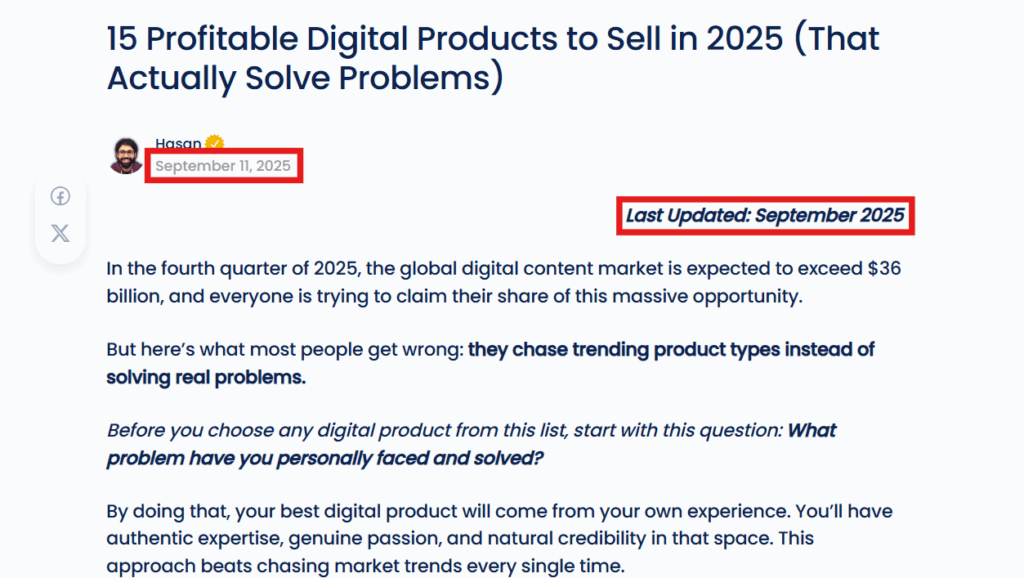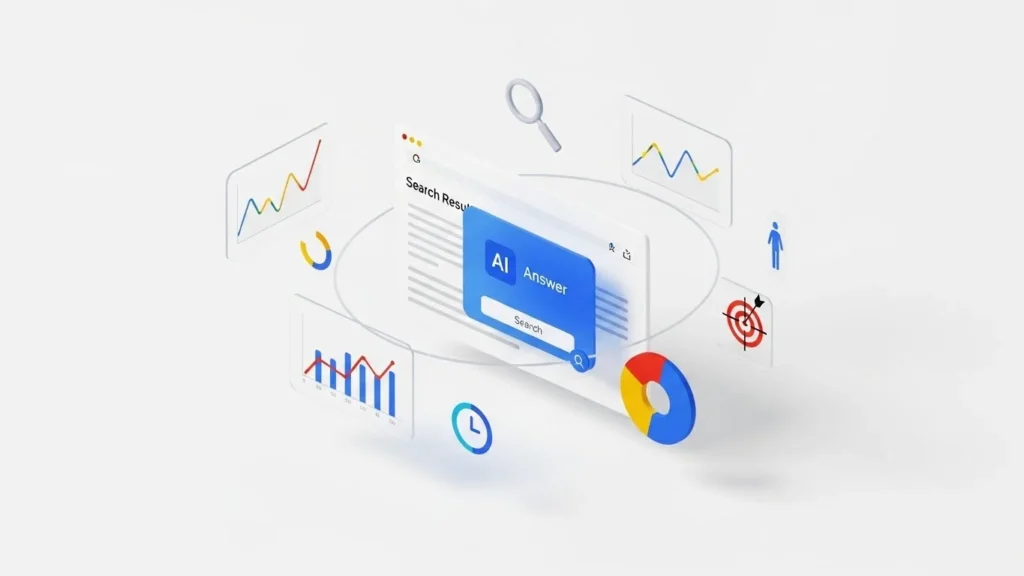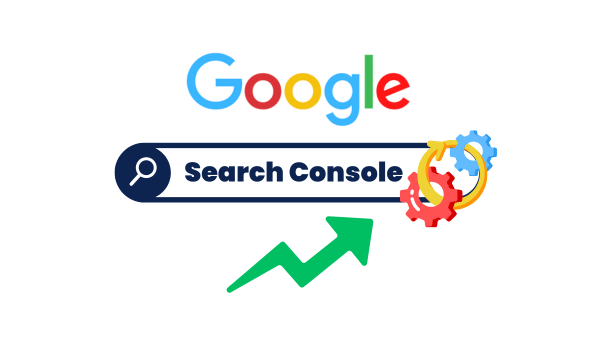How I Get Free Traffic from ChatGPT in 2025 (AIO vs SEO)

I recently tested something that completely shifted how I think about organic traffic. When I asked ChatGPT, “What’s the best course on SaaS on WordPress?”, my course WordPress SaaS 2.0 appeared as the first result.

The same thing happened in Perplexity. My website is now ranking at the top of AI responses, generating free traffic directly from AI models.
This isn’t luck. It’s the result of implementing AI Optimization (AIO), where I optimize my content to appear in AI-generated responses. And if you’re still only focusing on traditional SEO, you’re missing out on a massive traffic source that’s growing exponentially.
The SEO-to-AIO Evolution
For years, our organic traffic strategy looked only like this:
- Research keywords using tools like Ahrefs or SEMrush
- Optimize on-page elements (title tags, meta descriptions, headers)
- Build quality backlinks
- Track performance in Google Search Console
- Monitor impressions, clicks, and traffic data
This system worked because Google was the primary gateway to information.
Don’t get me wrong, you still need to optimize for Google search results, but to increase your chances of online visibility, you’ll also have to optimize your content for AI Models, because many people ditched Google and are using only them to search for stuff online, like:
- ChatGPT’s web browsing feature
- Perplexity’s real-time search
- Google’s AI Mode (available in 180+ countries as of September 2025)
- Claude with search functionality
- Microsoft Copilot integration
Each platform processes queries differently, but they all share one thing: they’re trained to provide direct human-like answers rather than just a list of links.
So, in conclusion, if your content gets selected as a source on AI models, you win. If it doesn’t, you’re invisible.
Google AI Mode
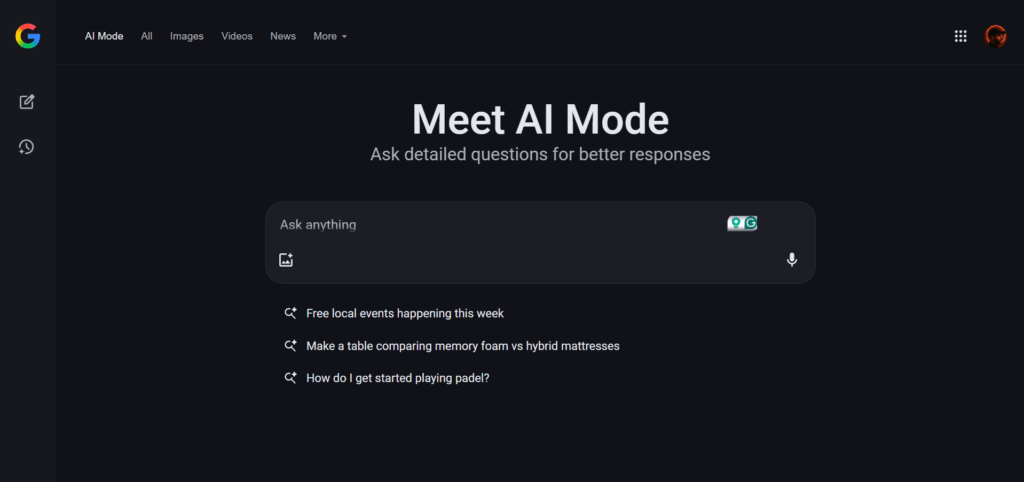
Google’s AI Mode is a new search experience that replaces the traditional list of links with human-like direct answers, which people prefer. While Google has stated that AI Mode will potentially become the default Google Search experience “soon,” it has since walked back on this statement.
Here’s what’s interesting about AI Mode availability: You can access it through google.com/ai, the Google app, or by clicking the AI Mode tab on Google.com (note that it is still not available to everyone as of September 2025).
Why this matters for marketers: Google’s search revenue increased 10% to $50.7 billion in Q1 2025, partially attributed to AI features. This isn’t an experiment that might fail; it’s a core business strategy that’s already showing positive returns.
How to Track AIO Mentions
With SEO, we use Google Search Console to see impressions, clicks, and keyword rankings. But what’s the equivalent for AI models?
I researched existing solutions:
- Ahrefs: $129/month
- SE Ranking: $95/month
- First Answer: $39/month for just 10 prompts
- Keyword.com: Similar pricing tiers
These tools might work well, but they’re expensive for most website owners just starting with AIO. So, I built a free alternative.
I created this system using Make, a no-code platform that lets you build automations without writing a single line of code. And, you can start for free.
The system is composed of 3 scenarios (I’ll attach the link to all the scenarios below, so you can download and import them directly), each handling a specific task of AIO tracking:
Scenario 1: Query Tracking and Mentions
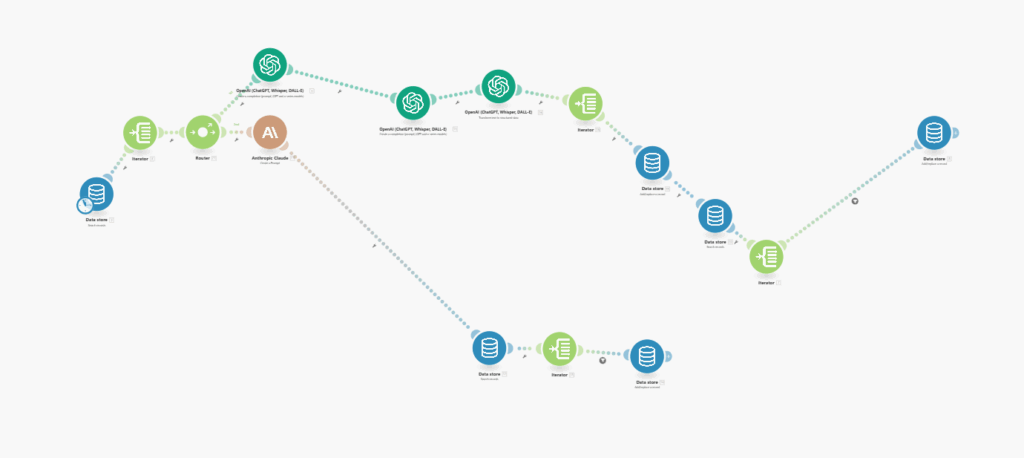
This is the core of the system. Here’s what it does:
- Add prompts you want to monitor (these are like “AIO keywords”). Find them using my free LLM query generator.
- The system automatically queries ChatGPT with these prompts
- Responses get parsed and stored in structured JSON format
This scenario runs on a schedule you set (daily, weekly, or custom intervals) and builds a database of how AI models respond to your target queries.
Scenario 2: Keyword Performance Analysis
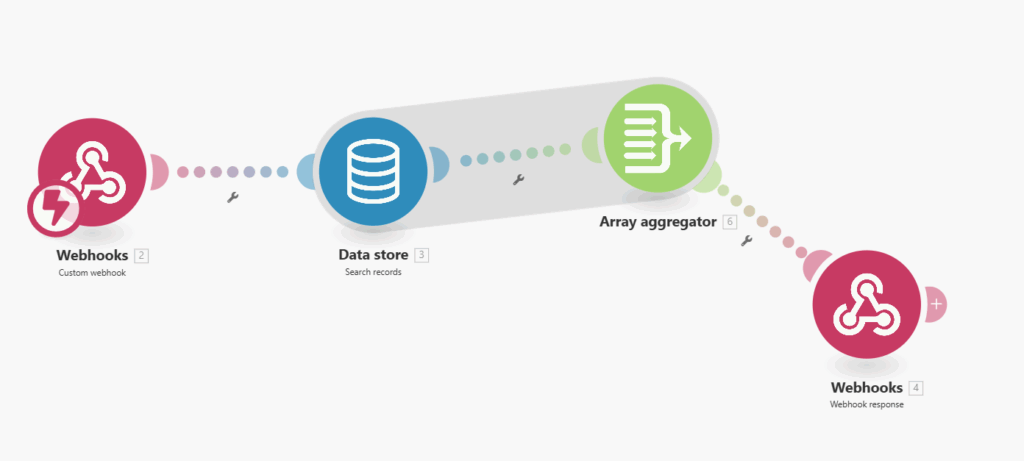
This scenario focuses on brand and competitor tracking:
- Track mentions of your brand, website, or products across all collected responses
- Monitor competitor mentions in the same responses
- Store historical data for performance tracking over time
Scenario 3: Competitor Tracking

This scenario handles competitor monitoring and comparison:
- Monitor competitor mentions in AI responses for the same queries you’re tracking
- Compare the mention frequency between you and your competitors
- Analyze competitive positioning to identify gaps and opportunities in AI responses
The AIO Tracking Dashboard
I even built a clean UI for the system, where you can view all the results you get from your Make automation.
Want the complete system with all blueprints, detailed explanations of each scenario, and the custom dashboard? Watch my full implementation tutorial here: Complete AIO Tracking System Setup.
And, if you just want the scenarios, here you go 🙂
7 Proven AIO Optimization Tactics
Now, the important part is how you can improve your ranking on AI models. Based on my research and testing, here are the tactics that actually work:
1. Add Statistics, Numbers, and Proof
AI models heavily favor verifiable, factual content. Instead of writing “Our tool is popular,” write “Our tool has 100,000+ monthly users with a 4.8/5 satisfaction rating.” (don’t lie, though, use real data 🙂
Example: On my SelfHostSchool landing page, I specify “150+ users joined” rather than just saying it’s “widely used.” This specificity makes AI models more likely to cite it as a credible source.
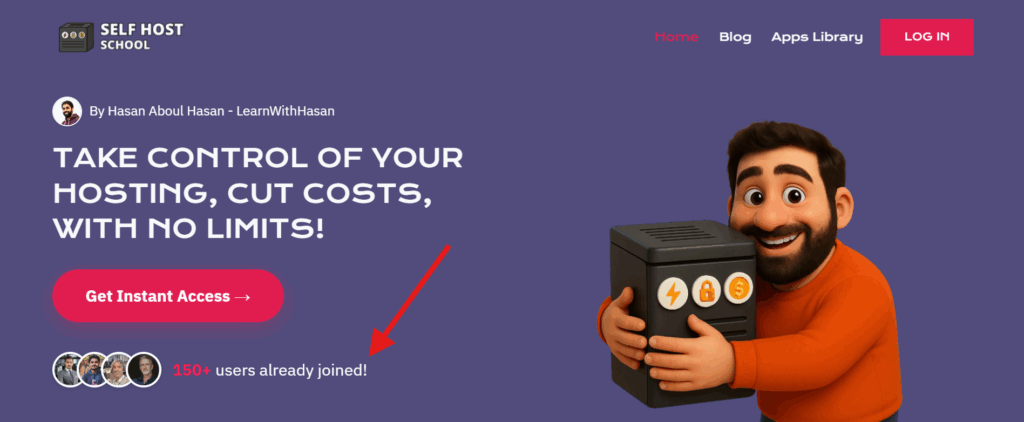
2. Engage on Reddit, Forums, and Quora
AI training data includes massive amounts of community discussions. Being active in relevant communities shows you’re real and knowledgeable.
Tip: Don’t just drop links. Provide genuine value in discussions, then mention your solution naturally when relevant. The goal is to create authentic mentions that AI models will encounter during training.
3. FAQ Optimization for Natural Language Queries
People ask AI models complete questions, not just keywords. Your content should answer these questions directly.
Example: Instead of optimizing for “WordPress hosting,” optimize for “What’s the best WordPress hosting for SaaS applications?” and provide a complete, detailed answer.
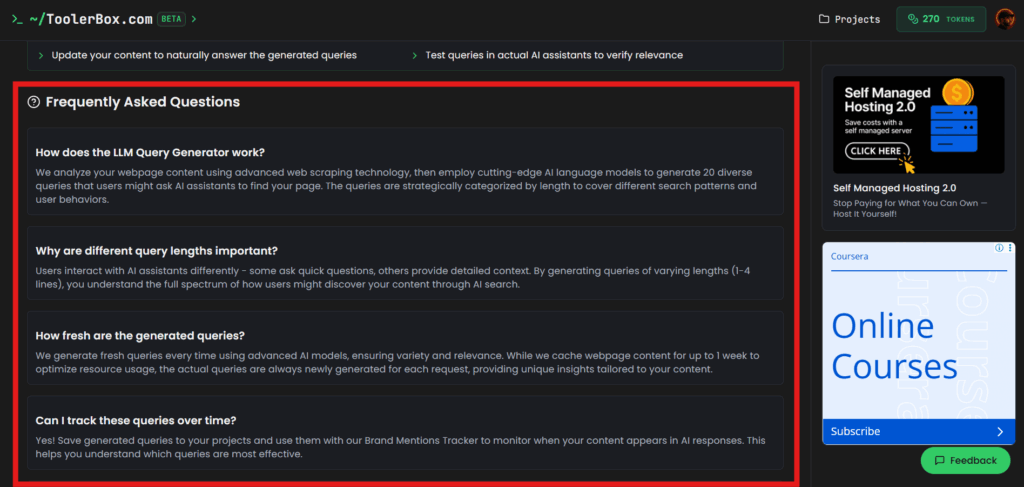
4. Create Comparison Tables and Structured Data
AI models excel at processing structured information. Create side-by-side comparisons in your niche that AI can reference directly.

5. Build Multi-Platform Authority
Publish the same core information across multiple platforms:
- Your website
- YouTube videos
- Medium articles
- LinkedIn posts
- Guest posts on relevant blogs
When AI models see consistent information across multiple sources, it increases trust and the likelihood of citation.
Example: This exact article is provided as a video tutorial on YouTube and on Medium.
6. Show Fresh Update Signals
AI models prefer current information. Make it obvious when the content was last updated:
- Add “Last updated: [Date]” to articles
- Include recent examples and case studies
- Reference current events or recent changes in your industry
7. Implement JSON-LD Structured Data
Add schema markup in JSON on your website pages to help AI models understand your content structure. Here’s an example showing you how you can do it.
Finally, if you prefer to see all these tactics in action visually with the examples, check the full video on my YouTube channel 🙂
The LLM Query Generator: Your Free AIO Weapon
Here’s a bonus tool that makes AIO implementation much easier: I created the LLM Query Generator on ToolerBox.
All you have to do is paste any webpage URL, and it generates up to 20 different prompts people might use to find that page through AI models.
You might think people will search for “WordPress course,” but the tool reveals they’re actually asking “How to build a SaaS with WordPress from scratch” or “Best way to monetize WordPress skills in 2025.”
These generated prompts become your AIO keyword targets, the queries you optimize for and track in your monitoring system.
Your Next Steps
The AIO opportunity window is still wide open. Most businesses are still focused exclusively on traditional SEO, which means less competition for AI model citations. Start Here:
Phase 1: Research and Setup
- Identify your target prompts using the LLM Query Generator tool
- Set up the free tracking system on Make
- Audit your existing content using the 7 tactics
Phase 2: Authority Building
- Engage in relevant community discussions
- Publish across multiple platforms
- Build genuine relationships in your industry
- Monitor and respond to tracking data
Phase 3: Scale and Iterate
- Expand tracking to more AI models
- Test different prompt variations
- Analyze competitor strategies
- Refine content based on performance data
Remember: AIO doesn’t replace SEO; it supplements it. You still need traditional search optimization, but now you also need to optimize for AI model responses.
The businesses that master both will dominate organic traffic in the coming years.


